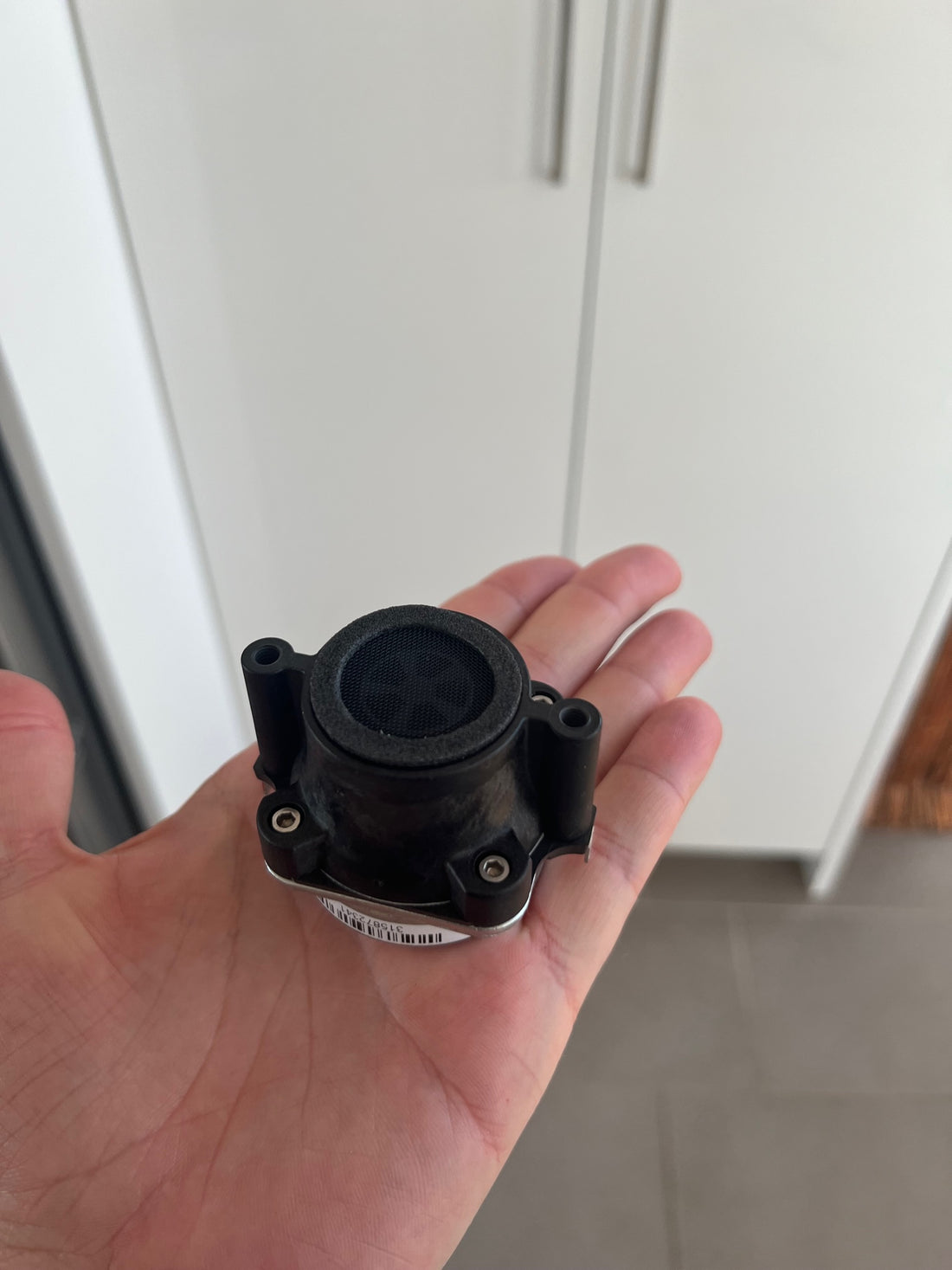
In this blog post I test the B&C DH350 on my ES-2000 Biradial No.1135. This horn can be purchased as a custom order here.
Please check out my other blog posts here.
For reference, the photo below is the ES-2000 Biradial shown with an RCF compression driver. However each horn is made to order and can be customized for the DH350's unique mounting hole pattern.

The DH350 uses a non-standard hole spacing as shown below. The hole spacing is only 53mm while a normal 1" compression driver is 76mm.

The DH350 is a new compression driver from B&C which features a reversed diaphragm where the dome faces the front of the driver similar to a regular dome tweeter.

To facilitate this B&C has deployed a spiral path for the central vane (see above) which delays the wavefront coming off the tip of the dome allowing proper phase with the outside perimeter vane (blue path is above image). This new technology is featured in a brochure provided by B&C here.
The brochure mentions that higher flux is achieved by virtue of the new motor configuration, which technically should reduce distortion. We shall see if this bears out in my measurements.
Features
- 1" throat
- Polymer diaphragm
- 36mm (1.40") voice coil
- 110dB Sensitivity
Shown below is my test setup using my original prototype ES-2000 wood horn.








Measurements
Impedance


Frequency Response
My initial testing started with measuring the DH350 on the following horns.
- ES-2000 Biradial
- ES-1200 Biradial
- ES-800 Biradial
Below is the raw response with the ES-2000 Biradial.

Below is the response with the ES-1200 Biradial.

Below is the raw response with the ES-800 Biradial.

I then overlaid the three horn measurements for direct comparison. As you can see the ES-2000 (red) provides the strongest output in the upper treble.

Since this is a small format compression driver, I will continue all further testing with the ES-2000 biradial (smallest horn).
Continuing with the measurements...
Below is the frequency response for the DH350 + ES2000 combination. The blue represents the raw frequency response while the red is with a 3.3uF capacitor.


All further testing will be conducted with the 3.3uF capacitor in place. I've done this to provide a flatter response which is more representative of a real use case. However the response should be further tailored when integrating into a finished speaker design.
Below is the off-axis response with the 3.3uF capacitor in place, measured at 0,15,30, & 45 degrees off-axis.

Below is the off-axis colored polar map out to 90 degrees off-axis.

Below is the same as above but shown as a contour 1 and contour 2 plot.


Time Domain
I then measured the burst decay with a 10cm mic distance. I set the graph to a 35dB vertical scale.

Showing the same as above but as a sonogram is shown below.

Below is the CSD waterfall plot.

Showing the same as above however as a contour plot is shown below.

Distortion
I then measured harmonic distortion using an 85dB and 95dB test signal.


Multitone
I then measured IMD using the same 85dB and 95dB test signal.


Gedlee Metric (Gm) Distortion
I then measured Gm distortion at the same 85dB and 95dB test signal.

Conclusion
The DH350 offers excellent test data that should translate into good overall sound. The diaphragm breakup is outside of the audible band at 14kHz. The driver provides a very linear response with only a very small resonance at 4.7kHz.
The harmonic distortion sweep shows a very consistent distribution across its frequency bandwidth, with benign H2 being predominant. Higher order harmonics are very low with H3 being only 0.00557% and H4 at 0.00443% for the 95dB test signal level. IMD exceeds my target by a wide margin, showing a full -70dB across the audible spectrum for the 85dB test signal level.
Overall, the DH350 is an exciting new product for B&C.
